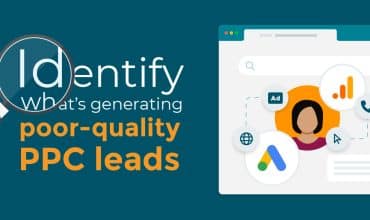How to ramp up care home enquiries [5 data-driven tactics]
Whatever challenges a care home marketing team faces, one thing is certain: your focus must always be delivering enquiries and move-ins.
Of course, that’s easier said than done. Especially when marketing budgets can be chopped at the drop of a hat if, say, costs increase or move-ins are down.
As marketers, we all know how devastating cuts to your budget can be for your business’s long-term growth.
And we all know that, instead, businesses should maintain marketing investment and refocus it on the activities that drive the best returns. In turn, this will improve brand awareness and help drive growth in the longer term.
Data-driven care home marketing tactics you can use today
So, we all know the theory. But what tactics should care home marketers focus on if they are to continue driving enquiries and move-ins, and prove the value of their efforts?
Here are five data-backed recommendations, based on recent research and analysis using anonymised data from Mediahawk’s call tracking and marketing attribution software.
1. More enquiries come from organic search
According to our 2022 Care Home Trends report, organic search is the number one channel for driving phone enquiries into care homes – with a 31% increase in calls from care home websites when comparing year-on-year data.
It means that you’re much more likely to see increased enquiries if you focus your efforts on driving traffic from search engine results pages. To do this, you should be doubling down on the following tactics:
- Create high-quality web content that directly answers prospective residents’ queries and concerns. Use long-tail keywords as much as possible, referencing genuine queries made by website visitors – such as ‘care home finance advice’.
- Build a bank of informative video content to promote your care home. It’s a shrewd move as Google continues to push rich content, such as video, to the top of search results. What’s more, HubSpot and Wyzowl state that 86% of marketers have found video effective in generating leads for their businesses.
- Get active on social media and build an online community around your care home. Posting on Facebook (more on this in a moment) and other social platforms is great for your visibility. Social media groups, forums and threads are frequently found in search results these days. It means you need to be present in these channels; actively responding to your prospects’ queries and concerns. This will help build brand reputation and credibility and show your prospective residents and their families that you truly care.
2. Facebook drives more phone calls than any other platform
Our research has also shown that Facebook can help care homes drive phone enquiries – more so than any other social platform.
A solid paid ad strategy on Facebook will help drive leads for your care home. But ‘organic’ posts will also go a long way in growing your online visibility and driving enquiries.
The key here is to be thorough and consistent. First and foremost, you’ll need a content plan and posting schedule you can stick to. Then, work through the following pointers to optimise your Facebook presence for driving enquiries.
- Make sure your website URL is present across your Facebook profile. Add it to your About tab, event pages and any post you make where you want people to click through to your website.
- With Mediahawk’s Facebook integration, your contact information can be automatically updated whenever it changes. What’s more, UTM tags are applied to your website URL for tracking purposes.
- Use large images in your posts. These typically get more engagement – meaning more likes, shares, comments, and clicks.
- Convert post ‘likes’ to Facebook followers. If you see a lot of people liking your posts, be sure to try and turn them into followers of your Facebook profile. To do this, take a look at the people who’ve liked your posts and use the ‘invite’ button next to their names to encourage them to follow your profile.
- Add a trackable phone number to your Facebook profile to track phone calls from the page. UTM tags in Facebook posts will also help you track people arriving at your website via Facebook.
3. Be prepared to adapt and stay agile
Every strategy needs flexibility to adapt to ever-changing market conditions, customer behaviour, and technology developments – such as new marketing channels. Luckily, as a marketer, you’re in a good position to monitor, analyse, and act on all of these areas.
The keywords that prospects use in searches can give a great indication of the questions and concerns they have throughout their ‘buying’ journey. If you see a shift in the types of queries being made, it could indicate that a shift in your strategy is needed, too.
A perfect example of this is the emergence of respite care as a focus for prospect enquiries in the second half of 2022. In fact, according to Mediahawk data, calls about respite care increased by 233% year-on-year, while calls about ‘residential care’ remained flat.
Mediahawk’s speech analytics tool allows you to hear first-hand the words and phrases, concerns, and queries prospects have. It means you can act quickly and decisively when trends start to emerge, and adjust your strategy accordingly.
4. Make time for offline campaigns
In a digital-first world, it’s easy to think that offline campaigns aren’t worth your time.
But they are.
Our research shows that phone call enquiries into care homes are up 55%, when comparing August 2022 with August 2021. That includes calls originating from door drops, print advertising, and other offline sources.
Just make sure you’re allocating budget to digital and offline campaigns based on cold, hard, performance data. This is easy with Mediahawk, where you can see, side by side, exactly how each campaign is performing – including your offline campaigns.
5. Stop wasting advertising budget
You invest a large chunk of your overall marketing budget into paid advertising. So you need to ensure you’re always hitting the right audiences with the right messages to maximise returns – and avoid ad spend wastage.
The only way to stay on top of this is to make full use of analytics tools and software. Google tools can help you with the basics. But if you want a deep dive into truly useful insights, call tracking and marketing attribution software offers so much more.
For example, Mediahawk’s PPC call tracking tool helps you see conversions from calls as well as clicks, giving you a more accurate view of your pay-per-click ad performance to boost return on investment.
What’s more, PPC call tracking helps you:
- Quickly and easily make decisions about your ad spend. Dashboards and reports give you instant access to all the data you need to see which campaigns are working and which aren’t.
- Get a complete picture of campaign performance. You can join up your PPC, online and offline campaigns, with powerful lead attribution across every marketing channel.
- Spend less time gathering data. Quickly and easily compare responses from Google Ads, Microsoft Advertising and Facebook ads and more in one report.
Subscribe to Mediahawk
"*" indicates required fields

Get an in depth understanding of the marketing activities that are driving enquiries and residential move-ins.



